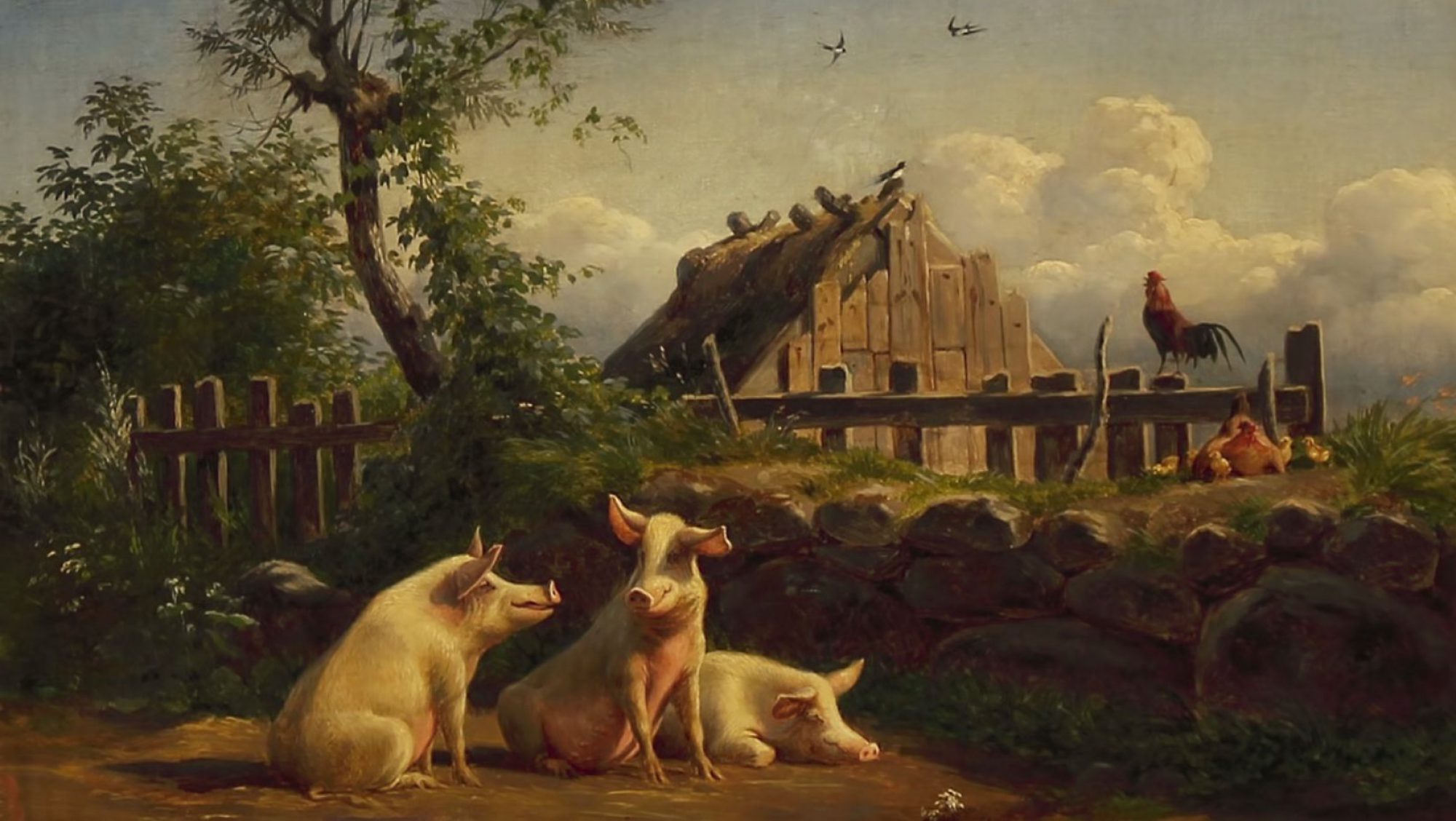Our five year old once noted that the world she lives in is green, and indeed it is, except during the winter months. We live in the midst of a deciduous hardwood forest, with maple, oak, tulip poplar, and hickory prominent among the mix. There are a few white pines in the area also (one of which towers over a portion of the dwelling) who ensure that even during cold, gray winter days our view in never quite bleak. Good friends they are, and especially good for climbing, so the girls say. It has been years since I ‘clumb’ a tree. I did roll down a hill last summer though. After recovering I swore not to do it again, but at least I gave it a whirl.
White pines also provide a source for pine needle tea, which many say is a good source of vitamin C, though I’ve done no independent testing to confirm this. I guess it’s a matter of faith. Adherents of science have extraordinary faith, doesn’t it seem?
This year, however, I decided to harvest some needles from our Christmas tree instead, a handsome Canaan fir that was ceremonially taken down and placed back outdoors on the 7th, and brew up a medicinal concoction mixed with honey. In the past we’ve sourced raw, organic honey from the Amish family down the road and around the corner, but they had nary a drop for sale this year. So I had to make do with store-bought honey, which meant the tea had fewer crispy bits floating about the cup. T’was a goodly, warming, cheering tea, gut for the innards and heart.
‘ome is where the ‘art is.
Our approach to green living, other than dwelling in the forest, is relatively simple. In fact, it could be called primitive. For example, a favorite thing to do in the summer months is what I like to call primitive cookery. We gather the trees and branches that have fallen during fall and winter, cut them to size with a human powered bow saw, and stack them at the base of a large oak tree. When the time comes, I’ll then strike steel and flint to cotton, and use that gleaned bounty of the forest as fuel to fire various chunks of beef, impaled chickens, beans, and roastin’ ears (sweet corn) over a large, open, stone-lined pit in the lower garden. Satisfying, that, on several levels.

Sparking the fire as described requires a modicum of squatting, grunting, and contorting that, while putting me in touch with my inner, primal, primitive Selbst, causes the 50-year-old in me to say “let’s make this snappy, bud!” Canaan fir branches as tinder get the fire blazing in a jiffy.
The trunk of our Christmas tree will be eventually be used for something I’m sure; an improvised spear, a one-handed kite retrieval system, or maybe as additional reinforcement of the laundry line on blanket & sheet day. Point is, it’ll all get used, and not end up in a land fill.
Of course, being green might have different connotations for others, and we highly encourage its practice in whatever form you can bear; energy efficient juicers, hemp clothing from California, or a celebratory midsummer stuffing of the gob on organic, grass-fed beef. Every little bit will help.
Incidentally, I do believe ALL food was organic, in days of yore. When did that change? And are we paying more for something now considered niche that used to be standard, or have we just become accustomed to purchasing cheap non-nutritive food products instead and have lost the ability to value real food?
When Spring Fever Was a Real Disease
Spring fever has an entirely different meaning these days, somewhat jovial in nature. A brief image search reveals those afflicted with the modern strain to be primarily a marketing segment. Such was not always the case.
In centuries past an affliction struck the populace in spring, rendering them weak with joint swelling, loose teeth and poorly healing wounds. The name given this disease of listlessness and weakness was “Spring Disease”, or “Spring Fever”, and that name has continued into our time as the listless loss of ambition that accompanies the first few days of warm weather in the spring. A few centuries ago this disease of spring was more serious and was often fatal.
Source: pauljanson



And greenly we be… 🙂
LikeLike
Living green is easy for us, who liv in the country. City folks can make a difference by making better choices when it comes to food. I liked the way you pointed out the long forgotten fact that all food was once organic.
LikeLiked by 2 people
New Urbanism would be worth examining.
Click to access 274034426.pdf
At its simplest, New Urbanism
“…aims to build hamlets, neighborhoods, villages, towns, and cities rather than subdivisions, shopping centers, and office parks like those found in conventional suburban developments…Maximizing walkability is essential.”
LikeLiked by 2 people
We use geothermal for our home, etc. 🙂
So true about the food! Medicine too! At Rush Presbyterian St. Lukes Hospital in Chicago, they have medical stuff on display from the Civil War era. The doctor’s large drug case was full of bottles of various natural herbs. Now, the pharmaceutical companies have the doctors like puppets on a string. Fortunately, our (rare) doctor allows us to use many herbs and natural substances (and he promotes natural foods); he is a real rarity!
LikeLiked by 1 person